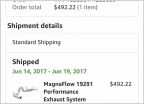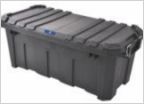-
Welcome to Tacoma World!
You are currently viewing as a guest! To get full-access, you need to register for a FREE account.
As a registered member, you’ll be able to:- Participate in all Tacoma discussion topics
- Communicate privately with other Tacoma owners from around the world
- Post your own photos in our Members Gallery
- Access all special features of the site
How much gas does the alternator take to run?
Discussion in '3rd Gen. Tacomas (2016-2023)' started by Tacoma.Rovirosa, May 20, 2021.
Page 3 of 5
Page 3 of 5


 OEM front camera install
OEM front camera install Inside door panels, protection from dog paws. Ideas?
Inside door panels, protection from dog paws. Ideas? Exhaust choice? Magnaflow vs. MBRP
Exhaust choice? Magnaflow vs. MBRP Philips Nightguide Platinum (H11 headlight)
Philips Nightguide Platinum (H11 headlight) Suggestions for a bed storage box for the necessities
Suggestions for a bed storage box for the necessities Electrical - Ground location from bed
Electrical - Ground location from bed











































































